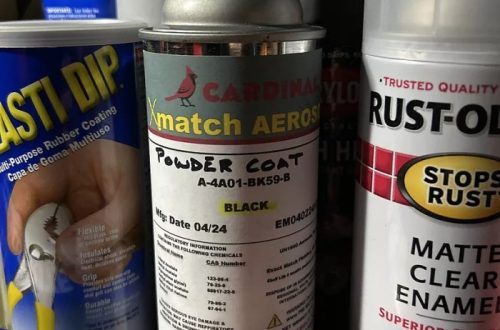Introduction to Lead in Reusable Water Bottles
In recent years, concerns have risen about the presence of lead in our everyday products—including reusable water bottles. Understanding the use of lead in manufacturing and its potential risks to our health is vital for making informed choices as consumers. This section will explore why lead is used, what the associated health risks are, and how this impacts the industry and consumer safety.
The Basics of Lead Usage in Manufacturing
Lead soldering, a material once commonly found in many consumer products, possesses qualities that make it a low-cost and accessible option for manufacturers. Its primary function in water bottles is to seal the vacuum insulation at the base, which is key to maintaining temperature for our drinks. However, concerns about lead exposure have led to growing scrutiny over this practice and a push for alternatives.

Health Risks of Lead Exposure
The impact of lead on human health is well-documented and unequivocal. The World Health Organization (WHO) has affirmed that no level of lead exposure is considered safe. Lead is particularly harmful to young children, where it can lead to developmental delays, learning difficulties, and other serious health problems. In adults, exposure can result in issues such as nerve disorders and decreased kidney function. These health concerns underscore the importance of choosing products free of lead-based materials.
Industry Practices: Who’s Using Lead?
Many reusable water bottle brands have come under scrutiny for using lead in their manufacturing process. The use of lead is to seal the vacuum insulation at the base of water bottles, a common industry practice. Organizations and consumers alike are raising concerns, prompting a closer look at which companies are using lead and the potential health implications.
Comparing Bottles: Hydro Flask and Competitors
Not all water bottle companies use lead in their production. Owala, for example, confirms no lead use. They state the production of their lead-free bottles is costlier but important for consumer safety. Other competitors like MiiR and LifeStraw have acknowledged using lead in their manufacturing. Importantly, Hydro Flask made a significant change by eliminating lead from its production process in 2013. This move sets an example for industry peers to prioritize health over cost.
Alternatives to Lead in Bottle Manufacturing
The industry is witnessing a pivotal shift towards alternative methods. Sigg, a Swiss brand, boasts lead-free soldering. Klean Kanteen utilizes noncrystalline silica beads instead of lead. These alternatives show that safer manufacturing methods are viable and can help in mitigating health risks. Companies are rethinking their practices to protect the well-being of their customers.
Consumer Safety Concerns
When it comes to the safety of the water bottles we use daily, understanding the materials and manufacturing processes is crucial. The discovery of lead in some reusable water bottles has sparked widespread concern. Let’s delve into how you can identify water bottles with lead and take steps to avoid them.

Identifying the Lead Issue in Water Bottles
To spot lead issues in a water bottle, it’s essential to know where to look. Typically, lead is found in the sealing dot at the base, where vacuum insulation is secured. Lead soldering, while cost-effective for manufacturers, poses significant health risks to consumers. Lead in any amount can be harmful, with no safe level of exposure, especially for children.
Monitoring the health of your water bottles becomes more important over time. Wear and tear can reveal the internal lead solder, increasing the risk of lead exposure. Transparent communication from brands about their manufacturing processes can help you stay informed and safe.
How to Spot a Lead-Free Water Bottle
Choosing a lead-free water bottle means checking brand statements and manufacturing details. Brands like Hydro Flask have publicly committed to lead-free production post-2013. It’s also wise to seek out brands using alternative materials, like Owala and Klean Kanteen.
Examine the water bottle thoroughly, especially the base, for any signs of a sealed dot that may contain lead. Opt for bottles with clear declarations of being lead-free or those that specify alternative sealing materials. Checking for independent certifications and product testing results can offer additional reassurance.
Prioritizing your health and the environment means opting for water bottles that are safe and responsibly made. By staying vigilant and informed, you can help ensure that your hydration choices do not compromise your well-being.
The Responses from Major Brands
The revelation of lead in water bottles has prompted responses from various brands. Consumers are seeking transparency and safety assurances from companies they trust. Below, we explore the responses from leading water bottle brands with respect to their use of lead in products.
Hydro Flask’s Transition to Lead-Free Products
Hydro Flask is a household name among water bottle brands. It led the charge in prioritizing consumer safety by eliminating lead from its manufacturing process in August 2013. This decision reflects a broader commitment to health and environmental responsibility. Hydro Flask’s transition shows it’s possible to maintain quality and durability. It sets a positive example for other manufacturers to follow.
Hydro Flask now uses a proprietary sealant, TempShield, which is lead-free. The company’s proactive approach assures customers that products purchased after mid-2013 meet high safety standards. Hydro Flask stands as a testimony that better alternatives to lead are not only feasible but also preferable.

What Other Brands Have to Say
Responses from other water bottle brands vary. Owala, for instance, has made a clear statement regarding its avoidance of lead. They stress the importance of health over cost, ensuring customers that their bottles are safe from the get-go.
Brands like Sigg, Klean Kanteen, and Owala have shared their commitment to lead-free manufacturing. They’ve invested in alternative sealing materials, like noncrystalline silica, to eliminate potential health risks. MiiR and LifeStraw, however, confirmed they still use lead in some manufacturing processes but assure that exposure to consumers is nonexistent.
Yeti, another popular brand, notes on its website that it uses some lead. The company insists this component is inaccessible to consumers, emphasizing their product safety.
While some brands remain silent or vague on their lead usage, the pressure from consumers and advocacy groups is leading to a market evolution. Brands are realizing that the public demands not only sustainable products but also transparency in product safety.
The Lifecycle of a Water Bottle
Understanding the lifecycle of a water bottle is key to grasping the long-term risks associated with lead exposure. From production to disposal, each stage carries potential concerns for consumer safety.
The Risk of Lead Exposure over Time
Repeated use can put stress on water bottles, leading to wear and tear. Over time, even the most durable bottles may degrade. This degradation can expose internal lead solder. The risks increase if the protective coating over the lead seal wears off or is damaged. Even bottles advertised as lead-free may carry some risk if they are not maintained properly or are of older manufacture.
With no safe level of lead exposure, it’s crucial to regularly inspect water bottles. Pay close attention to the base and the seal. Consumers should replace their bottles at signs of wear, to minimize lead risk.

Warranty and Replacement Options for Damaged Goods
Most reputable water bottle manufacturers offer warranty programs for their products. In the event of damage, these options are important for maintaining safety. Companies like Stanley, mentioned in previous blogs, have a lifetime warranty. Under this warranty, if the seal is exposed, consumers can get a replacement.
Hydro Flask, with its commitment to lead-free products post-2013, provides replacements for defective or damaged goods. By offering these warranties, brands are acknowledging the importance of safe, long-lasting products. It benefits their commitment to consumer health and environmental sustainability.
Bottles that are lead-free and maintain their integrity over time support a healthy, active lifestyle. They also uphold the promise of safety given by responsible brands. It is up to the consumer to stay informed and proactive about product choices and replacement options.
Making Informed Choices
Navigating the world of reusable water bottles can be complex, but being informed is critical. This section will help you make choices that prioritize your health and the environment.
Choosing Lead-Free Water Bottles
Selecting a water bottle free of lead requires attention to detail and awareness of brand practices. Here is how you can make a safer choice:
- Check the brand’s production date: Opt for bottles manufactured after the company transitioned to lead-free processes, such as Hydro Flask post-2013.
- Read product labels and descriptions: Look for explicit statements about being lead-free or using alternative safe materials in manufacturing.
- Seek third-party testing assurances: Verify if the bottle has been independently tested for lead and other toxins.
- Inquire about material transparency: Contact customer service to ask about the use of any lead in the manufacturing process if the information isn’t readily available.

By taking these measures, you can ensure that your water bottle is safest for daily use, protecting both your health and the planet.
Advocacy Efforts and Consumer Awareness Campaigns
Creating a lead-free industry requires collective action. Here are ways to participate in this movement:
- Support advocacy groups: Organizations such as Lead Safe Mama champion consumer safety by testing products and providing valuable information.
- Lobby for stricter regulations: Advocate for policies that require manufacturers to disclose material use and ban lead in consumer products.
- Educate your community: Share knowledge about the risks of lead and safer alternatives with friends, family, and online communities.
- Feedback to brands: Reach out to manufacturers to express your concern about lead usage and applaud those who commit to lead-free products.
Through advocacy and awareness, consumers can influence the industry, encouraging more brands to adopt lead-free processes and create a healthier future for all.




